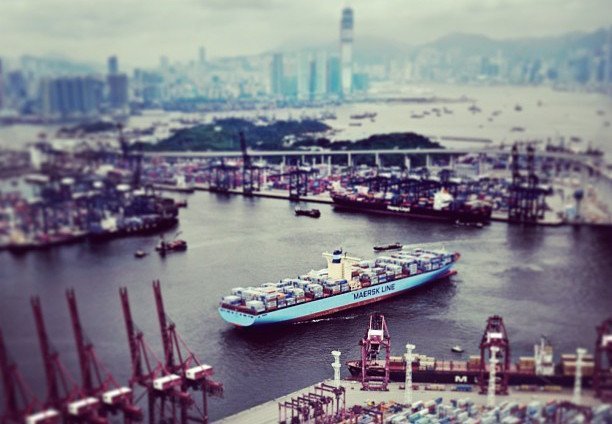Dreams, delusions or fantasies: Making sense of the G7, SCO and China’s BRI

Geopolitical events in the Sino-Asian region have evolved quickly. Significant international events provided an intriguing glimpse into possible future directions. A recent trip to China occurred at the same time as the G7 summit, characterised by personal insults traded between the USA and Canada, highlighting the growing dissent and division within NATO and its allies. In contrast, the Shanghai Cooperation Organization (SCO) ended a meeting on a cautiously optimistic note. Is this a reflection of greater unity within the Asian/ Central Asia axis? It appears there is reason to believe that this is more than mere fantasy and a warning for G7 to get the act together.
Another illustration of the rapidly changing nature of global politics was the highly anticipated meeting between US President Trump and North Korea’s Kim Jong Un, promising dreams of a more stable Asia, but the peace is fragile and could still play out as an illusion. If peace and economic prosperity in the region could be attained through the ‘win-win’ framework of the Belt Road (BRI), it would place China in an increasingly attractive geo-political and trading position.
Members of the Shanghai Cooperation Organisation (SCO) include China, Russia, Kazakhstan, Kyrgyzstan, Tajikistan, Uzbekistan, India and Pakistan. A clear indication of growing Chinese influence and importance in the region is the inclusion of first-time members Pakistan and India. Historically, cooperation between Pakistan and India seemed a distant fantasy, and it points to the geopolitical effects that the Belt Road is having on promotion of cooperation and regional development. Importantly, the SCO now represents approximately half the world’s population. Joint communiques from the SCO address collaboration along the BRI in terms of resources centred around railways, trade, financial services, and people-to-people exchanges.
Trade within the SCO grew by 19% in 2017, and totalled $217bn. Contrary to claims of China’s investment strategies being unidirectional, there is an emerging reciprocal investment approach. China’s indirect investment into SCO member countries is currently circa $74bn, whilst member countries have invested $1bn into China. Facilitating this trade is the establishment of 21 economic and trade cooperation zones along the BRI.
Press reports often do not capture some of the nuances that are gathered when having a beer with locals. On the ground, the one China policy is keenly debated, but the one point of agreement appears to be that Taiwan and the South China Sea are inextricably Chinese. Hong Kong is commonly cited as an example of the success of the Chinese to operate in a ‘one-country, two system mode’. I was surprised by a number of initiatives undertaken by the Fujian province to engage with Taiwan, particularly with students. There has been a significant increase in the number of Taiwanese students registering for exchange programs in Chinese tertiary institutions, suggesting that the people-to-people objectives within the BRI are gaining momentum and giving currency to the notion of a ‘single China’.
The centrality of Singapore as a maritime hub featured strongly in discussions. Currently consideration is being given to how the BRI will link the central manufacturing region of Chongqing with Eurasia. Singapore has an MOU with Qinzhou, which it claims gives the island nation direct access to Chongqing, but fails to recognize the role of other port-rail pairings such as Shanghai and Qingdao. When placing these on a map, it is clear that whilst Singapore may claim that its MOU with Qinzhou makes it a strategic partner in the BRI, it does not make commercial or rational sense. Why, for example, would a manufacturer want to rail product to Qinzhou then ship to Singapore, offload and tranship when they can simply ship to a destination country or rail to other ports that are directly connected by rail i.e. Gwadar in Pakistan, Kyauk Phyu in Myanmar, Thailand and Malaysia? Can it effectively compete with the Yangtze River Route that offers 83 quay berths, six bonded facilities and operates 24 domestic and foreign shipping routes?
Furthermore, Qinzhou is part of the Beibu Gulf Economic Zone that incorporates six cities and was initially part of China’s ‘Go West’ drive through the ASEAN countries such as Vietnam and Cambodia. The other five cities are Nanning, Beihai, Yulin, Fangchenggang and Chongzuo. They all have significant BRI rail connectivity projects in play, hence my recent comments that Malaysia’s recently announced cancellation of the rail project with Singapore further isolates Singapore from involvement in the BRI. There is also the Greater Bay Area project linking Hong Kong, Macau, Guangzhou, Shenzhen, Zhuhai, Foshan, and Zhongshan offering trade access… but that’s a story for another day.
It also emerged that contractual, legal and financing services were best conducted from Hong Kong. When pressed as to why and what alternatives would be considered, Hong Kong was described as best placed to act as a conduit between Europe and China. The perception is that Hong Kong provides a marketplace in which there is a greater understanding of the complexities in trade and business between the two regions. Singapore seemingly understands trading nuances in global trade relations, whilst Hong Kong ‘thinks global but acts local.’ Interestingly, alternative service / financial centres that were offered included London and Oslo.
It would appear that the BRI is breaking ground and causing disruption to current alliances. It has achieved a greater sense of unity within the SCO and highlights the division that currently bedevils the G7. This disunity within G7 and the Eurozone make China and its BRI an attractive option, however, the risks and uncertainties of this focus are the subject of ongoing evaluation.

Canada and the US traded insults? Hardly. The Canadian PM calmly stated the country’s stance. The insults came from US aides.